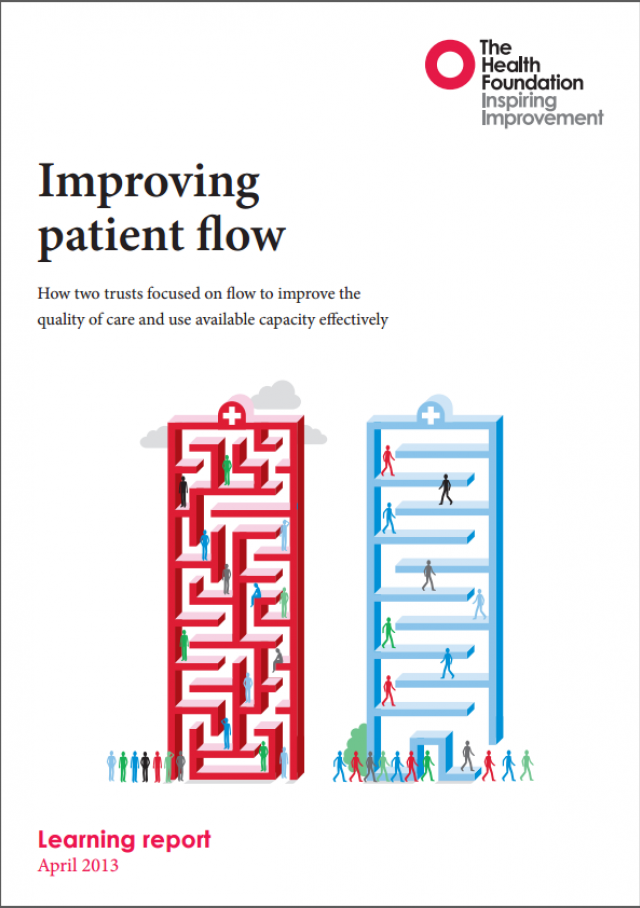Improving patient flow How two trusts focused on flow to improve the quality of care and use available capacity effectively
April 2013

Key points
- This learning report describes the work undertaken by two NHS trusts as part of the Health Foundation’s Flow Cost Quality programme.
- It illustrates the problems created by poor flow that the programme was set up to address, and provides practical examples of how focusing on flow can improve quality, use available capacity effectively and save money.
- The report summarises key lessons from the programme and highlights important challenges for designing services and approaching change by focusing on flow.
Flow Cost Quality ran in two NHS hospital trusts: South Warwickshire NHS Foundation Trust and Sheffield Teaching Hospitals NHS Foundation Trust. South Warwickshire looked at the emergency flow for all adult patients, while Sheffield focused on one clinical subspecialty – geriatric medicine. The case studies that accompany the report provide more details of the work done by each of the trusts.
Each trust brought its own context, culture, challenges and opportunities to the programme. Their experiences have provided rich learning about the relationships between flow, cost and quality, and about managing large-scale change within a complex system.
The Flow Cost Quality programme built on, and contributed to, a growing body of work on improving flow. This report includes an appendix of other programmes that have aimed to improve flow, as well as suggestions of further reading.
Download the case studies
Further reading
Work with us
We look for talented and passionate individuals as everyone at the Health Foundation has an important role to play.
View current vacanciesThe Q community
Q is an initiative connecting people with improvement expertise across the UK.
Find out more

